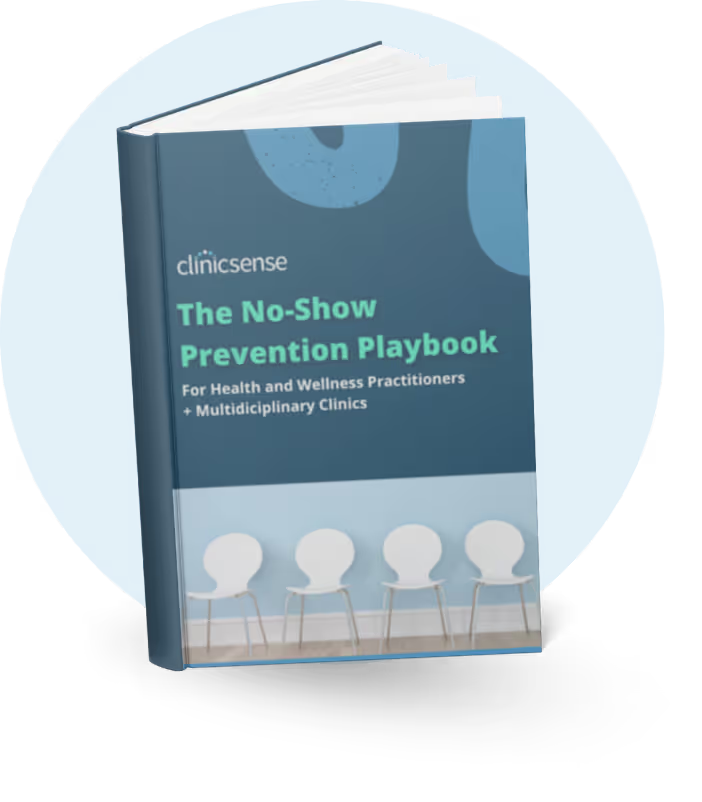How To Guides
October 20, 2025

Do you record massage therapy SOAP Notes for each of your clients’ treatment sessions? SOAP Notes are a way for massage therapists and other healthcare providers to map where a client has been and where they are going. The unique SOAP format (Subjective, Objective, Assessment, and Plan) of these reports helps you keep track of your client’s condition and progress through each treatment session.
SOAP Notes can be time-consuming to complete. But don’t underestimate the importance of this record-keeping method. Well-written, detailed SOAP Notes enable you and your staff to quickly memorialize and communicate essential information about a person’s current health status and their ongoing treatment plan.
When recorded properly and consistently, these notes can become your guide to providing each of your clients with personalized, effective treatment. SOAP Notes can also be used to support medical billing or legal claims by providing evidence of the services you have provided to a client. Plus, because the SOAP format is recognized across medical disciplines, SOAP Notes are an important tool for communicating with other members of your client’s healthcare team.
SOAP notes, when referred to in a clinical sense, refer to the note types that health and wellness practitioners use to keep track of their patient treatment plans and progress. SOAP stands for Subjective, Objective, Assessment, and Result.
Let’s dive deeper into what each of these steps mean and illustrate each with a massage therapy SOAP notes definition and examples.

Information about the client’s own description of their chief complaint.
The subjective component of SOAP notes centers around the client’s chief complaint (CC), which is a description of their own purpose of their visit. It may include several major elements:
Not all this information necessarily needs to be recorded in equal detail. The therapist may elect to elaborate on individual items at their discretion.
To illustrate how the subjective section of SOAP notes is recorded, let’s say a client comes in with a chief complaint of headaches. Talking with the client about the history of their complaint reveals that the headaches are located near their right temple, they started after the client took a desk job which involves long hours working on a computer with a mouse, they vary in severity from 2 to 8 on a scale of 1 to 10, they increase in intensity after the client has been working on their computer and the client has been taking pain relievers to alleviate them. The therapist notes that the client’s description indicates the pain is located near the temporalis muscle.
Observable and measurable information about the client’s current symptoms gathered by the massage therapist and other professionals.
The objective component of SOAP notes records observable and measurable data about the client gathered by the massage therapist or other professionals. It includes any vital signs taken by the therapist and findings from physical examinations.
To illustrate, continuing with our example of our headache sufferer above, let’s say the therapist observes the client’s posture when sitting in a chair and notes that the client exhibits an excessively forward head posture coupled with raising of the shoulder and tightening of the bicep. The therapist then conducts some tests to measure the client’s range of motion in the neck, jaw and shoulder and records the results.
Identifying the client’s condition and analysis of their progress.
In the assessment section of SOAP notes, the therapist records an identification of the client’s condition and an assessment of their progress. This can include
To continue our illustration, our headache sufferer’s symptoms include, in addition to the headache itself, jaw tension, neck tension and “mouse shoulder.” The therapist identifies the problem as possible temporal tendinitis, associated with adjacent muscular tension in the jaw, neck and shoulder, triggered by a combination of repetitive use of the mouse and poor sitting posture while working at the computer. The therapist notes that the client’s pain level has decreased on a scale of 1 to 10 since their last session and since their initial visit.
Actions the therapist will take to alleviate the client’s complaint and instructions given to the client.
In the plan section of SOAP notes, the therapist records what course of action they and the client will take to alleviate the client’s chief complaint. This may include:
To conclude our illustration with our headache sufferer, the therapist recommends that the client follow up with visits twice a week to receive a massage for soft tissue release. They also give the client some recommendations on posture, some exercises for stretching their neck and shoulder, and some instructions on how to use a hot water bottle for periodic pain relief. The therapist writes a note to check the client’s pain level, posture and range of motion during the next visit. Finally, they refer the client to a specialist who can prescribe pain medication.

To illustrate the entire note-taking process in action, check out these complete massage therapy SOAP notes written example. In this case, the subjective phase of the SOAP process begins by noting that the client’s chief complaint is pain in the lower back and upper leg.

The pain started a few weeks ago while the client was lifting a box as part of their job as a delivery driver. They feel the pain constantly at a level of 3 to 8 on a scale of 1 to 10, with intermittent radiation of the pain from the back down the leg. The pain feels worse when lifting boxes or sitting than it does when lying down. Taking pain medication doesn’t provide relief. A review of systems notes that the chief complaint is musculoskeletal and is not accompanied by any notable issues with other systems. Under social history, the therapist notes the client’s work as a delivery driver.
In the objective section of the SOAP notes, the therapist records height, weight and body mass index data indicating that the client is obese. They perform some range of motion tests to measure the client’s ability to bend and turn from the waist without pain, recording the results. They have the client demonstrate the motion they use when lifting boxes, recording and observing some ergonomic issues.
In the assessment section, the therapist records the client’s symptoms and reviews some possible outcomes. They identify sciatica as the most likely culprit, triggered by lifting a heavy box using the incorrect ergonomic technique. They add that the client’s obesity may have placed them at greater risk of injury. They note the pain subsided somewhat after the client’s last massage session, but it flared up again after they bent over to pick up another box between visits.
In the plan section, the therapist notes the client’s goal of being able to perform their delivery job duties without pain. They recommend that the client come in twice a week for the next six weeks to receive heat therapy followed by a massage for soft tissue release. They educate the client on correct ergonomic principles when lifting boxes. They provide instructions for lower back stretches. They refer the client to specialists for pain medication prescription and to assess the need for x-rays to check the extent of possible injury.
Once you know how, writing SOAP notes can be easy, tips include: Using a standard format for all of your notes, developing a system for maintaining and filing your notes, and using massage therapy software like ClinicSense to track the process.
SOAP notes should be easy to recognize and navigate. Using a standard SOAP note template for each client’s treatment sessions will make it easier for you and others to quickly find information in your notes. Another way to facilitate your notes being consistent is to use online SOAP note software - this way you can create SOAP note templates that you use again and again - and even duplicate notes for clients.
You don’t want to mix up your client’s records or have to dig through stacks of papers on your desk when you need to investigate something about their treatment. So, create a filing system and diligently maintain it. Create a separate folder for each client and store them alphabetically.
When you put new SOAP Notes in a client’s folder, place them in order by date. Use reverse chronological order so that you can put the most recent notes on top--this makes the task of filing faster and easier.
Again the solution for this is to use SOAP Note software because it can store you SOAP notes safely and securely online.
SOAP Notes aren’t effective if they aren’t complete. While capturing all the necessary details during your client’s session may be a challenge if you are using manual note-taking methods, it’s important to complete them. Make sure you schedule enough time between clients to write your SOAP note. And if you’re running behind schedule, don’t let too much time pass between a treatment session and the completion of your notes - you may forget important details.
Use an online SOAP note tool that allows you to create custom templates for each practitioner.
Whenever you write your SOAP notes, remember that it is a device that may be viewed by other people. Maintain a professional tone and write legibly. Don’t use personal shorthand or add extraneous commentary to your SOAP notes. Do include enough detail so that someone who is not familiar with your client’s treatment history can be quickly brought up to speed.
Your client’s SOAP notes create a personalized treatment map, showing everyone on their healthcare team where they have been and where they are going. They ensure continuity of care and enhance communication between you and your client. This is why it is so important that SOAP notes are customizable - because the client's journeys are all unique.
Your SOAP notes software for massage therapists, physical therapists or other practitioners should be customizable, flexible, affordable, HIPAA and PIPEDA compliant. It should also be easy to use and offer the option to have customizable templates. Finally, your SOAP notes software should integrate with the rest of your practice management tools so you can assign notes to clients. So you can customize your online SOAP notes and intake forms to suit your clients needs, then store everything in a compliant way.
The best SOAP notes software is ClinicSense because it is flexible, customizable, integrated, and allows practitioners to take in-depth notes quickly, with their one of kind point-and-click SOAP notes technology. ClinicSense SOAP notes also integrate with the rest of your practice management suite for an end-to-end solution.


.avif)
.avif)
.avif)


Good SOAP means using detailed documentation, tools like voice-to-text SOAP notes and creating highly custom templates can help gather key details

Yes, they are known for their highly customizable SOAP notes, you can start from scratch or use a template to build something custom

ClinicSense offers a free SOAP notes template you can download, or try their software free, and access unlimited customizable digital templates





For 14 days